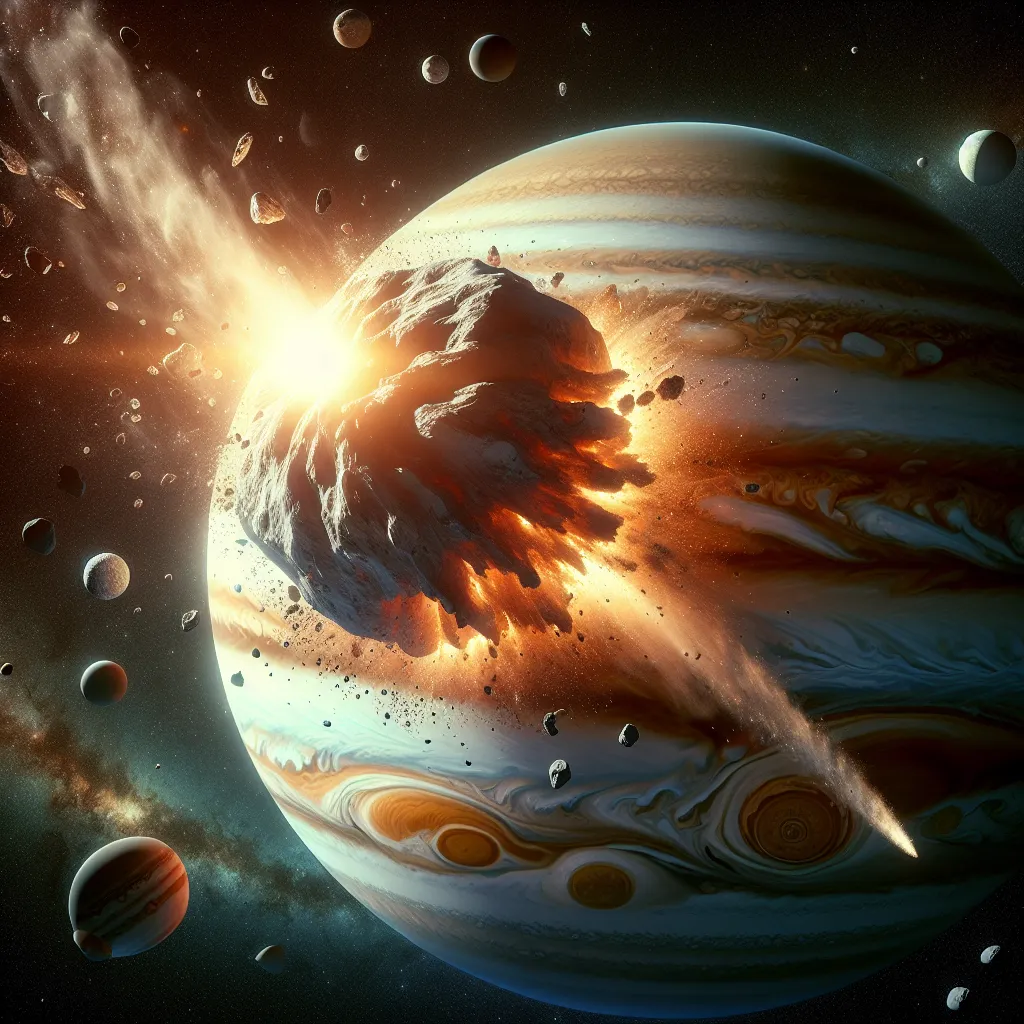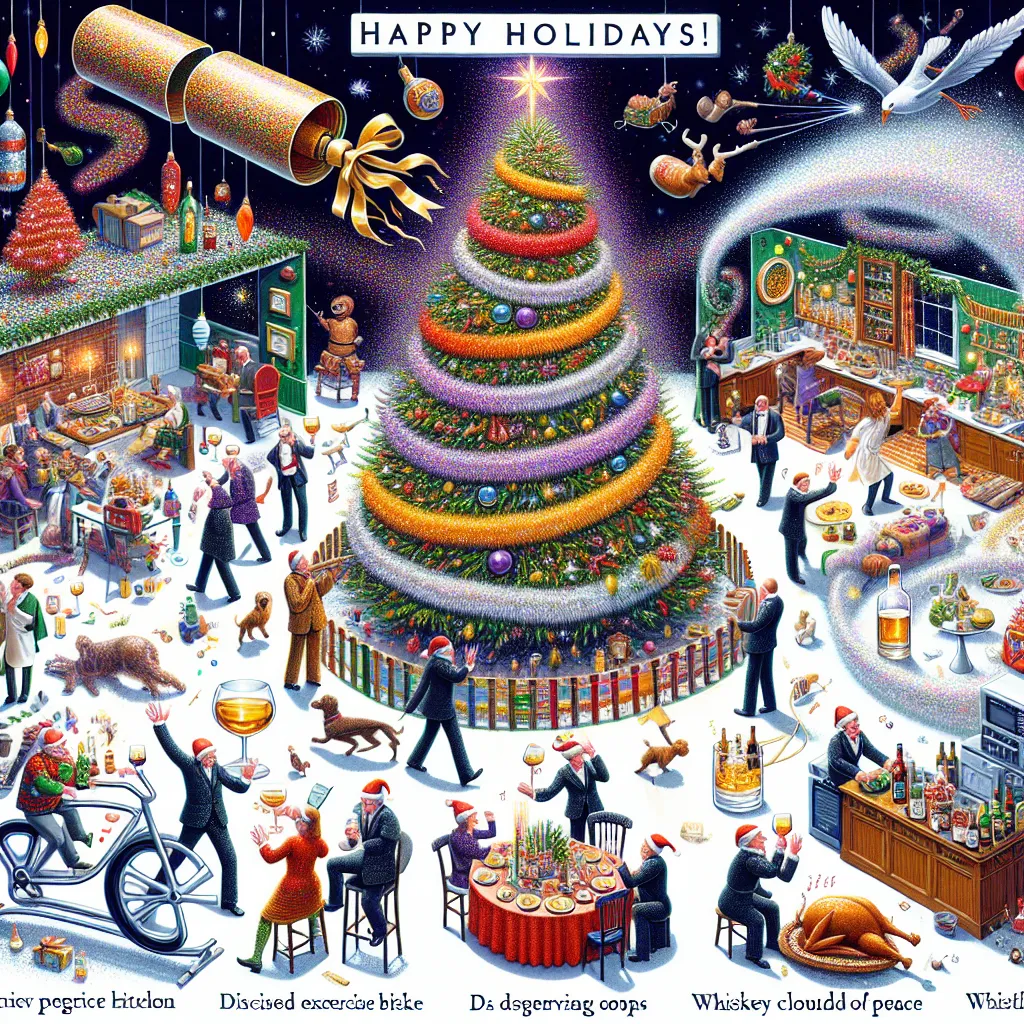For five billion years, an icy traveler—Comet Shoemaker-Levy 9—roamed through the solar system, igniting only when it neared the Sun. That was until it crossed paths with Jupiter, the solar system’s colossal protector. The immense gravitational force of Jupiter shattered the comet into pieces large enough to remake life’s history on Earth.
What’s astonishing about Jupiter is that it’s a gas giant; there’s no solid ground to stand on. If we could fly through Jupiter’s upper atmosphere, we’d witness swirling clouds and towering thunderstorms. You wouldn’t dare fly a plane into one of Jupiter’s hurricanes—they’re the size of Earth and far more powerful.
Some say Jupiter could have been a star if it were 30 times more massive, making our solar system a binary system. Even long after Comet Shoemaker-Levy 9 smashed into Jupiter, the aftermath was felt on Earth. It was a stark reminder of the solar system’s perilous nature, a truth well understood by Gene Shoemaker, one of the comet’s discoverers.
Gene Shoemaker and his wife Carolyn have spent years studying Earth’s craters, discovering more impact sites than anyone else. With meticulous care, they observed and charted their findings, the highlight being their optical glimpse of a comet that would collide with a planet.
The human fascination with Jupiter isn’t new. In 1610, Galileo Galilei, through his telescope, discovered Jupiter’s four moons: Io, Europa, Ganymede, and Callisto. Each moon is a unique world. Io is a sulfurous volcanic land, Europa is covered in ice, Ganymede has grooves and frozen slush, and Callisto is pockmarked with craters. These moons offered the first evidence that not everything orbited Earth, reshaping our understanding of the cosmos.
Jupiter provides a formidable picture of dominance. It’s 1,300 times the size of Earth, vast enough to swallow all the other planets and moons. Seen from Jupiter, Earth is just a tiny dot in orbit around a faint Sun.
Modern telescopes across the globe and beyond have continued Galileo’s legacy. For amateur astronomer David Levy, Jupiter marked the start of his stargazing journey. As he gazed through his first telescope in the summer of 1960, he never imagined that one of his discoveries would culminate in an epic cosmic collision that would captivate the world.
Fast-forward to 1989 when NASA launched the Galileo spacecraft on a six-year quest to Jupiter. Galileo’s journey was fraught with challenges, including using Earth’s gravity twice to sling itself towards Jupiter. When it finally arrived, Galileo delivered unprecedented insights into this gas giant and its moons.
Jupiter’s unique composition—consisting primarily of hydrogen—means it lacks a solid surface. As you dive deeper into its atmosphere, gas becomes liquid hydrogen, and further yet, a metallic sea. This massive planet’s magnetic field and atmospheric storms are spectacles we’re still striving to understand.
In 1993, the comet Shoemaker-Levy 9, influenced by Jupiter’s gravitational pull, broke into fragments and eventually collided with the planet in 1994. The world’s telescopes were eagerly trained on this event, capturing remarkable impacts that became fiery plumes extending thousands of miles into space.
Each impact left massive bruises on Jupiter’s surface, offering a live demonstration of the cataclysmic events that shaped our solar system. For scientists, it was an astronomical bonanza, providing real-time data about comet impacts and planetary atmospheres.
The descendants of Galileo’s telescope, stationed from mountaintops to space, now inspire astronomers worldwide. Witnessing the impact, David Levy, Gene, and Carolyn Shoemaker knew they were on the brink of groundbreaking discoveries.
In analyzing the aftermath, telescopes detected unexpected compounds and immense waves of energy, revealing new mysteries about Jupiter. As the Galileo spacecraft approached Jupiter, it unlocked more secrets about its atmosphere, discovering unexpected wind speeds, temperatures, and pressures.
The Galileo mission continued to send critical data, changing how we understand the formation and evolution of Jupiter—and by extension, our own planet.
Jupiter’s role isn’t just scientific curiosity. It acts as a cosmic vacuum cleaner, protecting our planet from potentially devastating cometary impacts, making Earth a safer place for life to evolve.
For centuries, Jupiter has safeguarded our existence. Now, in the era of advanced space exploration, we’re starting to uncover its secrets. With each revelation, our awe for Jupiter deepens, enriching our understanding of the celestial dynamics that govern our solar system.






